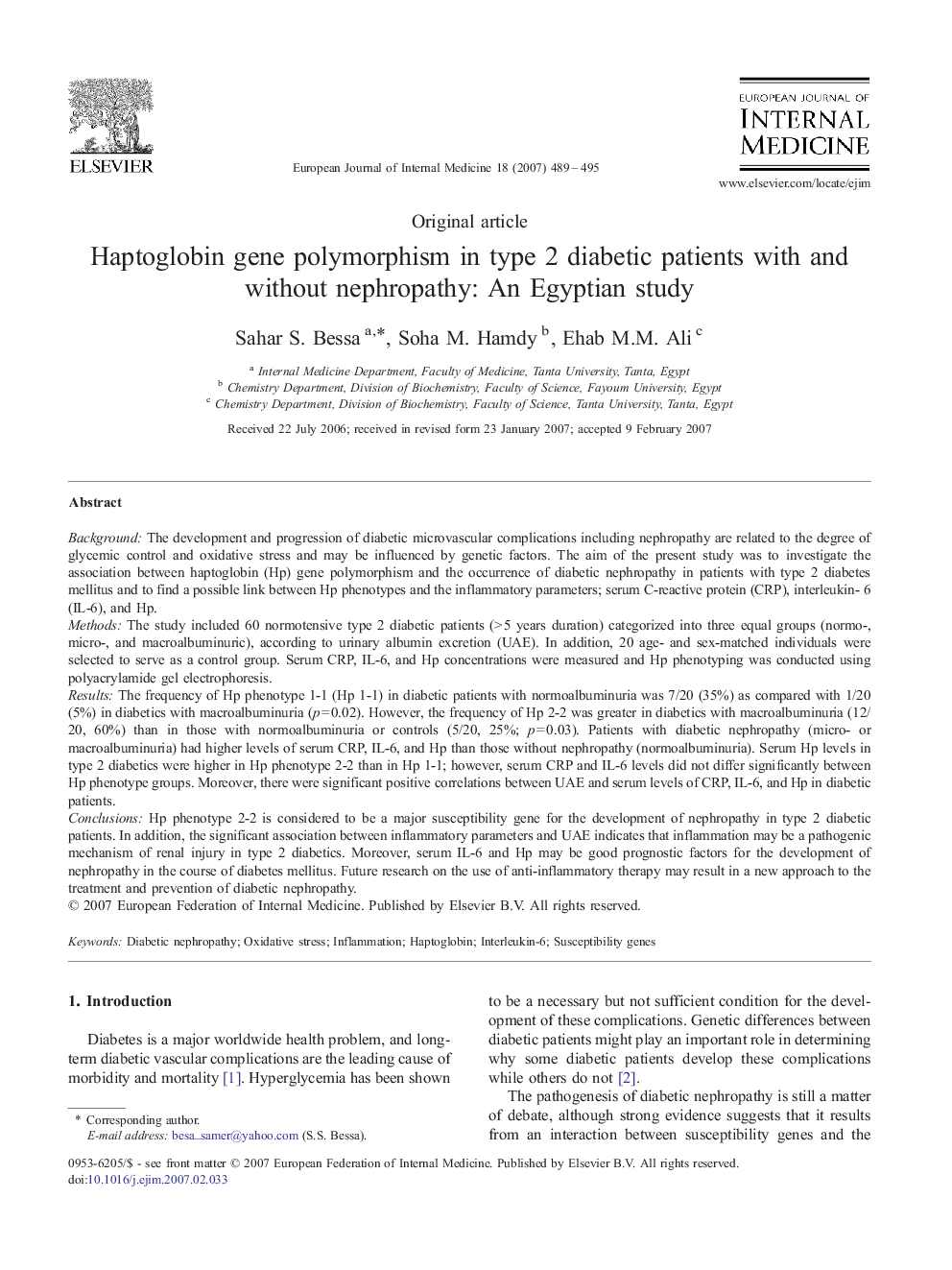| Article ID | Journal | Published Year | Pages | File Type |
|---|---|---|---|---|
| 3468209 | European Journal of Internal Medicine | 2007 | 7 Pages |
BackgroundThe development and progression of diabetic microvascular complications including nephropathy are related to the degree of glycemic control and oxidative stress and may be influenced by genetic factors. The aim of the present study was to investigate the association between haptoglobin (Hp) gene polymorphism and the occurrence of diabetic nephropathy in patients with type 2 diabetes mellitus and to find a possible link between Hp phenotypes and the inflammatory parameters; serum C-reactive protein (CRP), interleukin- 6 (IL-6), and Hp.MethodsThe study included 60 normotensive type 2 diabetic patients (> 5 years duration) categorized into three equal groups (normo-, micro-, and macroalbuminuric), according to urinary albumin excretion (UAE). In addition, 20 age- and sex-matched individuals were selected to serve as a control group. Serum CRP, IL-6, and Hp concentrations were measured and Hp phenotyping was conducted using polyacrylamide gel electrophoresis.ResultsThe frequency of Hp phenotype 1-1 (Hp 1-1) in diabetic patients with normoalbuminuria was 7/20 (35%) as compared with 1/20 (5%) in diabetics with macroalbuminuria (p = 0.02). However, the frequency of Hp 2-2 was greater in diabetics with macroalbuminuria (12/20, 60%) than in those with normoalbuminuria or controls (5/20, 25%; p = 0.03). Patients with diabetic nephropathy (micro- or macroalbuminuria) had higher levels of serum CRP, IL-6, and Hp than those without nephropathy (normoalbuminuria). Serum Hp levels in type 2 diabetics were higher in Hp phenotype 2-2 than in Hp 1-1; however, serum CRP and IL-6 levels did not differ significantly between Hp phenotype groups. Moreover, there were significant positive correlations between UAE and serum levels of CRP, IL-6, and Hp in diabetic patients.ConclusionsHp phenotype 2-2 is considered to be a major susceptibility gene for the development of nephropathy in type 2 diabetic patients. In addition, the significant association between inflammatory parameters and UAE indicates that inflammation may be a pathogenic mechanism of renal injury in type 2 diabetics. Moreover, serum IL-6 and Hp may be good prognostic factors for the development of nephropathy in the course of diabetes mellitus. Future research on the use of anti-inflammatory therapy may result in a new approach to the treatment and prevention of diabetic nephropathy.
